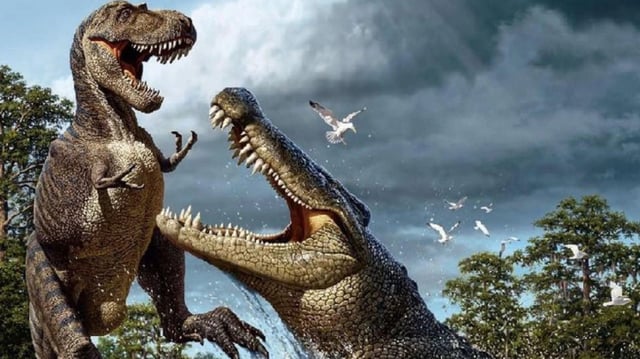Overview
- Deinosuchus, a massive Late Cretaceous predator, is now placed on a distinct branch of the crocodilian family tree, separate from alligators and crocodiles.
- The study, published in *Communications Biology*, suggests Deinosuchus had salt glands enabling it to tolerate saltwater and cross the Western Interior Seaway.
- Researchers analyzed 219 morphological traits across 128 living and extinct crocodilian species to reconstruct evolutionary relationships.
- Deinosuchus's fossils, found on both sides of the Western Interior Seaway, support its dispersal across North America and its role as an apex predator preying on dinosaurs.
- Some scientists dispute its saltwater tolerance, arguing further evidence, such as CT scans of salt-excreting glands, is needed to confirm this adaptation.


